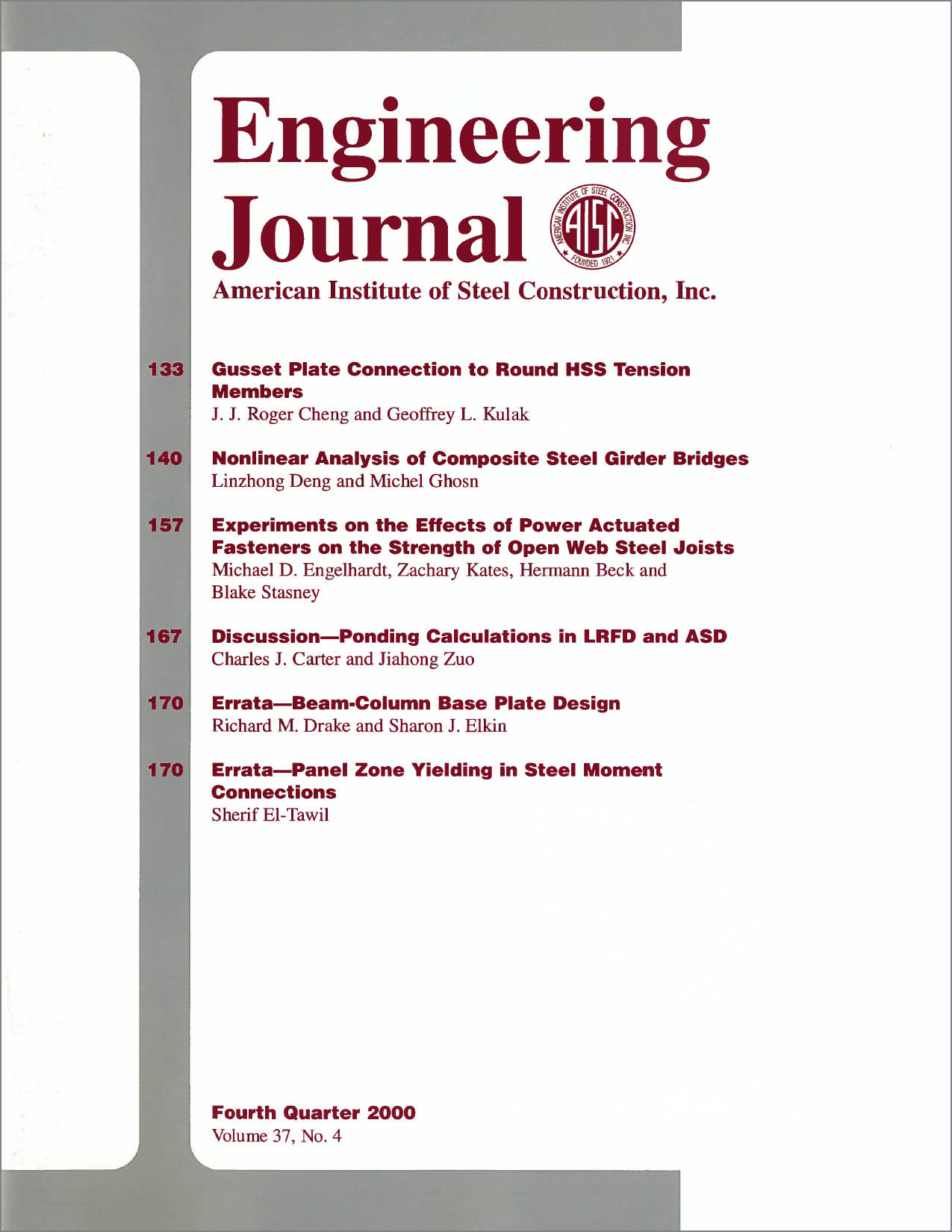Gusset Plate Connection to Round HSS Tension Members
DOI:
https://doi.org/10.62913/engj.v37i4.744Abstract
An experimental program and associated numerical analysis were undertaken to study the shear lag effect in round hollow structural section (HSS) tension members that are welded to gusset plates. The connection is made by slotting the tube longitudinally, inserting the gusset plate, and then placing longitudinal fillet welds at the tube-to-gusset interface. Transverse welds at the junction of the slot and the gusset plate may or may not be present. A total of nine specimens with three different tube sizes and various weld lengths were tested in the program. The majority of the specimens failed by fracture of the tube somewhere between the two gusset plates, and there was considerable ductility prior to fracture. Numerical analyses of the connections were carried out using an elasto-plastic model and measured material properties. Based on the tests and the numerical analyses, it is concluded that shear lag does not significantly affect the ultimate strength of the slotted tube connection, even with a weld length as little as 80 percent of the distance between the welds. The studies showed that the restraint provided by the gusset plate at the slotted end effectively increases the load-carrying capacity of the tube as compared to the unrestrained portion of the member. In the numerical analysis, fracture is assumed to have occurred when the equivalent plastic strain reaches a critical value. The test results are discussed in light of the requirements in the American Institute of Steel Construction (AISC) Specification for Design of Steel Hollow Structural Sections (AISC, 1997).

